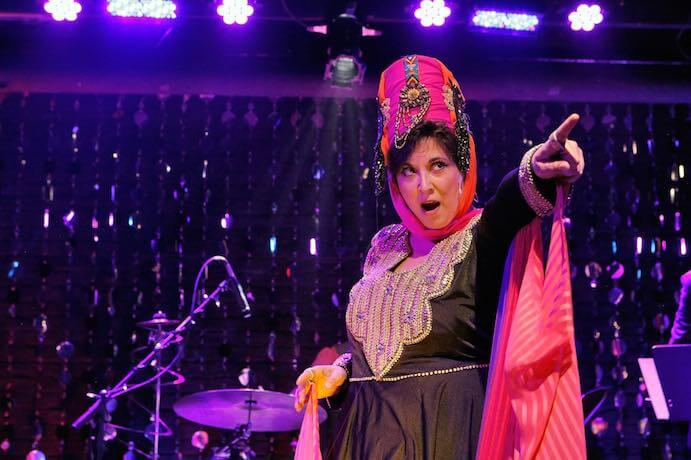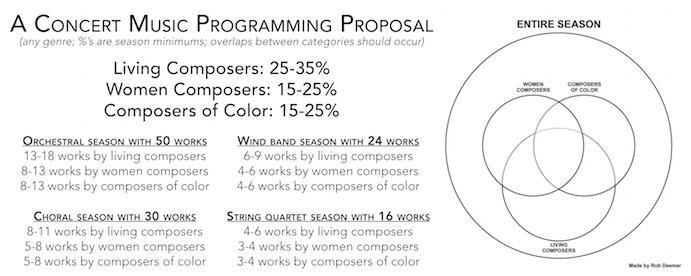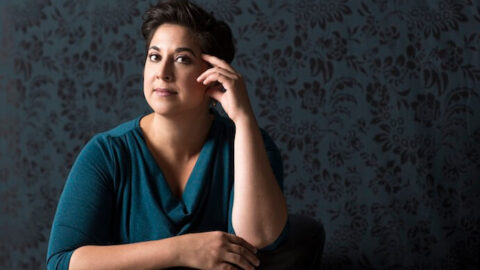Kamala Sankaram is not easily defined. It’s not so much that she defies labels but rather that she fits into so many simultaneously, it can be difficult to keep up. An enlightened composer who masterfully fuses Indian and Western musical styles, a captivating performer with formidable vocal chops, and a cognitive psychologist with a doctorate from The New School, Sankaram has become one of the most talked-about composers of today. This fall, I had the pleasure of featuring three of her stage works (performed by three excellent NYC-based opera companies) on the “Music @ The Flea” series, which I direct at The Flea Theater in TriBeCa. One of those companies, Experiments in Opera, recently appointed Sankaram as their Co-Artistic Director, giving her another opportunity to influence new music–this time, as a producer. I asked Sankaram five questions about her multifaceted approach to composition, how her personal and professional experiences and talents influence her work, and her plans for one of NYC’s most innovative opera companies.
As Co-Artistic Director of Experiments in Opera, what are some of the projects and initiatives that you envision bringing to life with the company in the coming years?
When Aaron [Siegel], Jason [Cady], and I began talking about the possibility of my joining Experiments in Opera, one of the key points they made was that it was an opportunity to bring in more diversity on the leadership side of the organization (in addition to being a woman, I’m a biracial Indian-American). While EiO has a good record of gender parity, particularly in their recent commissions, this would bring them closer to parity on the admin side. Which is rare. To date, there are still very few female and non-white administrators in opera. Despite this, the opera world is aware that it has a representation problem with regard to women and artists of color. This includes representation among administrators, but also composers and librettists, as well as directors, designers, and other members of the creative team. I think this is where EiO has an opportunity to contribute to the field as a whole. There are a couple of very specific challenges facing the issue of representation that we are in a good position to address.
One is the pipeline problem: larger companies are hesitant to hire artists who don’t have a track record in the field due to the amount of risk each new project entails. As a small company, we can be much more nimble in taking on the risk of working with a new artist. Thus, we can provide that crucial first or second project to those who want to work in the field and are building up a resume.
The second is the role of gatekeepers: we tend to hire those that we can think of quickly, and we tend to be able to think of people who are most similar to us more quickly than people who are not. As both a woman and a person of South Asian descent, my worldview and my network are different than many people in the field. Therefore, as a gatekeeper, I see my role as inviting people to the table who may not have had an invitation before.

You don’t shy away from difficult subjects in your operas, including historical challenges that women intellectuals faced (Enchantress) to violence and gang rape (Thumbprint). How do you effectively bring these painful and sometimes ugly stories to an audience that is inundated with challenging subject matter from nonstop news feeds, social media, etc.?
I’m often asked “why opera?” The answer, for me, is that music has the ability to create an immediate emotional connection, even when the subject and/or place is unfamiliar. And I think that’s the difference between dealing with a sensitive subject through the theater as opposed to reading the news. Theater, and especially theater with music, creates that emotional connection. You feel what the character is feeling, which can be the basis for creating empathy. When I read about the plight of women worldwide, I connect intellectually, but when I hear that woman sing her story, when all the beauty and tragedy are joined with the power of the human voice, it’s a different experience. I’m feeling with her. I take her perspective. And maybe this opens me up to the world in a new way. That’s what I hope for in each of my pieces: that the audience leaves the theater having experienced something new, and that this may change the way they see the world.
You’ve studied the human mind (development, neuroscience, cognition, abnormalities) in depth. When constructing a character, do you ever find yourself thinking about them on a more clinical level, and does your life as a scientist inform your art?
My lab in school focused on the pragmatic use of language: how context defines and changes the meaning of words. I think it does have a direct impact on how I think about musical structure in that I’m interested in how we could similarly create musical meaning through context. This could mean the use of leitmotifs: creating new ones or recontextualizing iconic themes. But it could also have to do with musical style and how style can create character. My recent research has explored the way that genre-specific style creates semiotic associations in the listener. I conducted an associative priming study that demonstrated that if you play people a “horror” style soundtrack they recognize words related to “horror” more quickly than unrelated words or nonsense words. This suggests that we’ve built up a repertoire of semiotic associations for genre-specific musical sound. I’m interested in how these associations can be used to create a sense of musical character. For example, in my new opera Taking Up Serpents (premiering at WNO this January 11th), Daddy’s character has a section inspired by Western swing, placing the opera in the South, and also tying Daddy to a more raucous sound.
Mother’s aria from Kamala Sankaram’s Thumbprint on Vimeo.
In a 2014 interview with Brown Girl Magazine, you said, “Being a woman is an obstacle since the industry is largely dominated by men” and despite Thumbprint’s all-female writing and production team, you wondered if the male reviewers who came to see the work “got the point.” In the nearly five years since then, do you believe that things have changed for women composers?
I think that things have changed in some ways and have stayed the same in others. There is definitely a greater shared awareness now of the continued imbalance in the number of works by female composers that are commissioned and performed in a given season. Opera America has created a wonderful initiative geared toward addressing these historic inequalities: the Discovery Grant for female composers and the Commissioning Grant for female composers (both of which I’ve benefited from). That being said, there are remaining structural inequalities that stand in the way of reaching gender parity. Part of this comes from the fact that our gatekeepers still mostly look the same. As I mentioned earlier, we tend to think of people who are similar to us more easily than those who aren’t, which leads to a homogenization of our networks. This homogenization means that when a position needs to be filled, it is likely to be filled by someone who looks like that gatekeeper. Historically, this has meant that female composers and composers of color are not as likely to achieve positions of higher visibility. Which means we don’t see them and don’t think of them for available work, which means they don’t get the work and aren’t visible, and so on in a sort of feedback loop.
But much of it also comes from implicit biases. Many people (including women) evaluate a candidate differently when they have a female name as opposed to a male name (this is also true for “ethnic” names). What’s insidious about this is that we all want quality work to be recognized, but don’t necessarily recognize that our own judgments of quality may be influenced by what we think a person’s gender or race is.
Finally, there is also an unwillingness on the part of some people to for things to actually change. When you’ve had the whole pie for so long, it doesn’t always feel good to share, especially if your individual experience isn’t representative of the larger statistical picture.

What do you believe are concrete ways that we (arts organizations, presenters, producers, collaborators, mentors, audiences, etc.) can actively make womanhood less of an obstacle but rather, a place where women composers can thrive?
I would say that the first step is to realize that we aren’t there yet, and that change will require actively prioritizing parity as a goal. If we look at success stories, such as the gender parity Iceland reached in its parliament, change has come about from first creating very concrete goals like quotas. A first step for presenters could be to set a goal of programming a certain percentage of living composers, women, and composers of color, understanding that there will often be overlap between categories (see image below for sample percentages). We should be doing the same thing for our designers and directors. And I would urge arts organizations to consider using quotas for their administrative positions and board make-up to ensure that our gatekeepers are also representative of the world we live in.
Another thing we could do is to switch to blind submissions for open calls. This, obviously, is a very different approach than quotas, but could be very helpful for finding people at the start of their careers who are trying to build up a track record. As so much of the research has shown that bias can kick in based on a person’s name, we can help avoid this by removing indicators of gender and race (just as we saw with the greater number of women admitted to orchestra positions with the introduction of blind auditions).

























